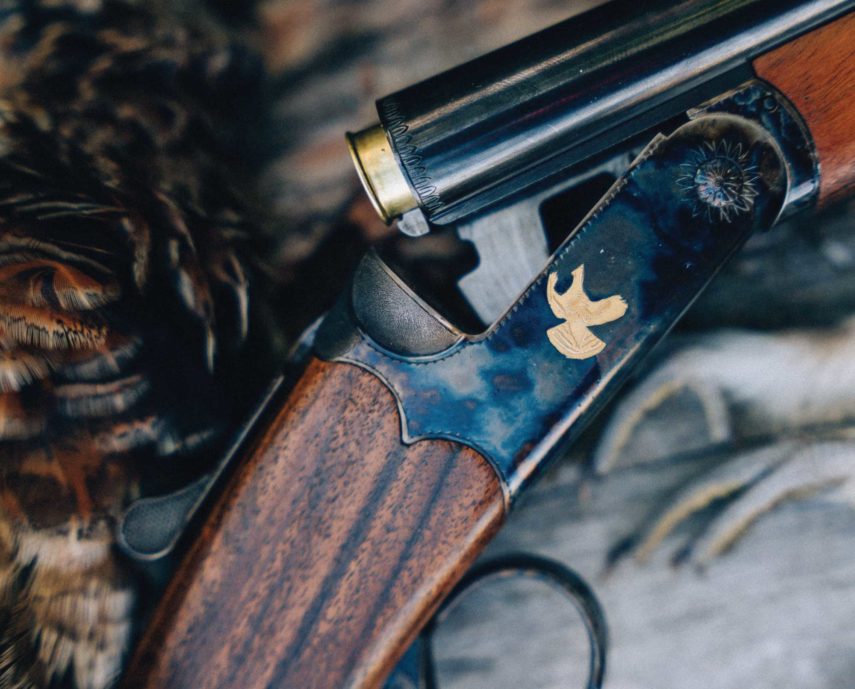Take a look at the barrel proofing process, proof marks from Europe to America and why it matters to shotguns and firearms.
Dad and I were browsing the used gun rack at a big box store on a trip through Pennsylvania a few years back when we happened upon a double gun that caught our eye. The gun was a 12-gauge with light color walnut stock and forend. On closer inspection, we saw a moderate amount of hand-cut engraving, as well as hand-cut checkering on the buttery walnut stock. An older gun made in Europe, the tag read ‘BLNE’, as it is sometimes referred to in gun parlance or a boxlock non-ejector. We speculated on the country of origin and details of the gun’s specifications until we could get the attention of one of the clerks to ask if it was OK to take the barrels off the action and check the proof marks.
What is Proofing?
Proofing is a type of (potentially destructive) testing whereby a firearm is discharged with appropriate dimension ammunition that has been overloaded with powder on purpose. Shooting a round overcharged with powder produces higher than normal pressure inside the barrels and action when the gun is fired. If the gun can withstand the increased pressure produced by an ‘overloaded’ round, it will withstand the significantly lower pressure of standard factory ammunition. Guns are measured before and after testing and fired remotely while being held in fixtures inside secured rooms for safety reasons. Proofing is a pass or fail test, there is no middle ground. Guns that fail may experience a bulged or split barrel, or in extreme situations, action failure which can result in shattered parts.
Proofing firearms began hundreds of years ago in Europe (1637 in the UK) and continues to be conducted as described above. 14 countries in Europe have adopted standards laid out by C.I.P. (think international proofing organization) which now dictate the pressures various firearms need to withstand to make proof.
Proof Marks on Barrels
Spend any amount of time in a gun shop that deals with guns from Europe and you will inevitably hear someone say “check the proof marks”. This statement broadly suggests checking the markings on the barrel flats and action watertable (on a shotgun). These are the two areas that gunmakers typically apply stampings pertaining to original specifications of the gun like chamber length or choke. It is also the area where proof houses apply proof marks on a gun.
Originally, each proof house in Europe developed its own proof marks. These marks have changed over the years and can help date a gun or determine a gun proofed with black powder or modern smokeless powder. Most European guns were proofed in the country in which they were made, or at least the country where they were assembled to the point that they could be shot. As a result, the proof establishes the maker’s country, and in cases where countries had more than one proof house, will determine which proof house the gun was tested in. For example, there six different German proof houses in Ulm, Hannover, Kiel, Munich, Cologne and Berlin, each of which has a different proof mark.
Jumping back across the pond, the obvious question becomes, “Where are the proof marks on Granddad’s old Ithaca Flues? (or insert any American gun name here)” Despite the fact that Europe developed a comprehensive proof testing standard, the United States has left that responsibility on the shoulders of the manufacturers, who for the most part, have held up their end of the deal. American shotguns and rifles are tested, though the extent of testing is left to the manufacturer’s discretion. This is not to imply that American made guns are unsafe, but rather that the responsibility lies with the makers themselves to ensure the end safety of the user. Makers could test every gun, or simply choose random samples to test. And, in today’s complex and advanced manufacturing facilities, there are a myriad of other tests that can be done to ensure the quality, durability and safety of a firearm.
Back in the gun store in Pennsylvania Dad and I established the Belgian origin of the BLNE gun by its ‘LEG’ proof mark referring to the Liege Proof House in Belgium. We also found a lion over a “PV” indicating a nitro proof. The gun was also marked with a 12 and 70 in a circle indicating it’s 12-gauge with 2 ¾” chambers. All in all the Belgian guild gun was well worth the $200 paid and it is now living happily amongst the other guns in my collection. A base knowledge of proof marks is a handy thing when assessing used guns and certainly helped solidify my decision to buy, rather than pass, on this particular double gun.



A well written and informative post. I would have liked to have seen a photo of the proof marks.
Michael Armao
Jefferson, MD
Thanks for the note and feedback. I will be working on a more comprehensive proof mark article in the future that will include photos of various guns and their proofs. Keep an eye out!
Joel P